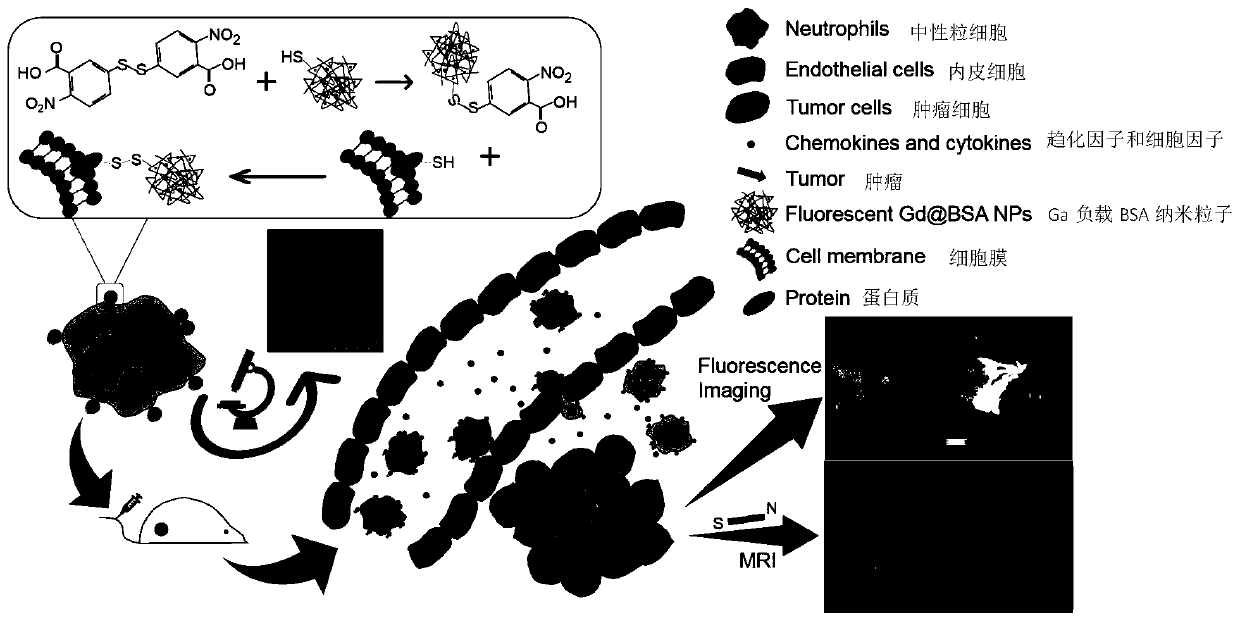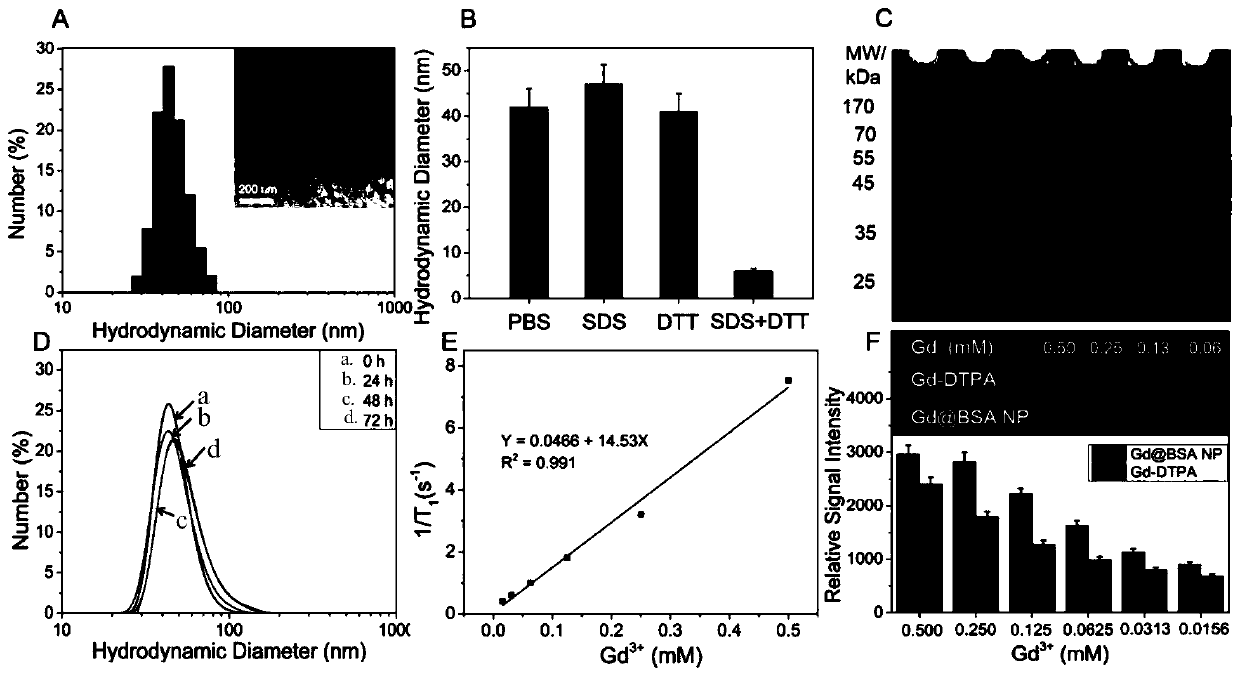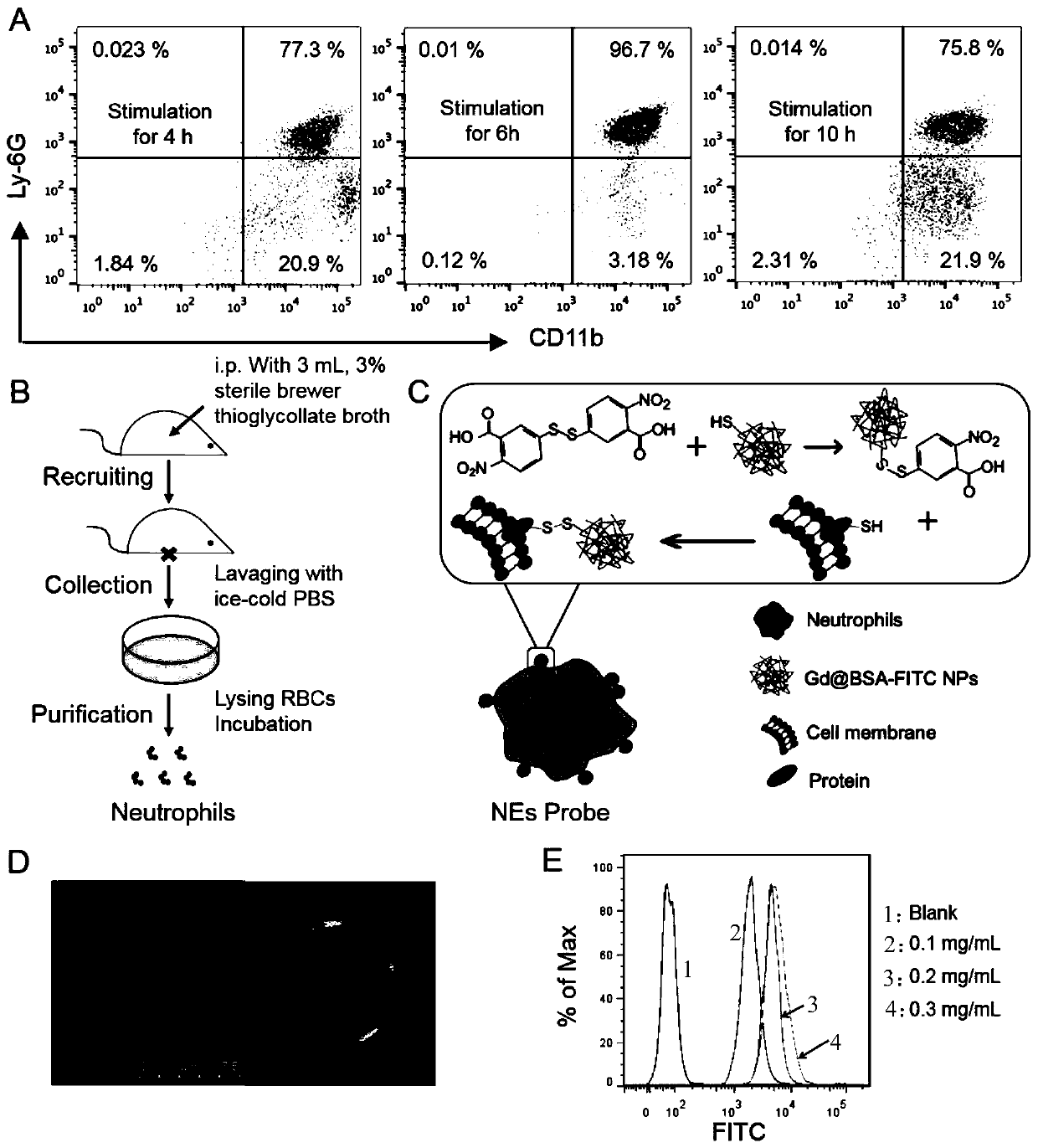Construction method of living cell probe based on neutrophilic granulocyte
A neutrophil and construction method technology, applied in the field of neutrophil-based living cell probe construction, can solve the problem of affecting neutrophil activity and biological characteristics, affecting high T1 relaxation rate, and tumor delivery ability Damage and other problems, to achieve the effect of simple nano-construction method, little impact on cell physiological functions, and easy access
- Summary
- Abstract
- Description
- Claims
- Application Information
AI Technical Summary
Problems solved by technology
Method used
Image
Examples
Embodiment 1
[0042] Example 1 NEs probe construction
[0043] 1. FITC-labeled BSA molecule
[0044] Dissolve in 10mg.mL -1 NaHCO 3 The BSA protein in the solution was mixed with FITC at a mass ratio of 1:40, stirred at a constant speed for at least 5 hours to fully react; then purified by ultrafiltration to obtain FITC-BSA.
[0045] 2. FITC-BSA reduction
[0046] The FITC-BSA protein solution was mixed with the reducing agent DTT at a molar ratio of 1:16, and was continuously stirred with 2% SDS at 90°C for 2 hours for the reduction reaction to fully expose the free sulfhydryl groups; then use a concentration of 0.1mg.mL -1 , MES solution with a pH of 4.4 was diluted to prepare a concentration of 1mg.mL -1 working solution.
[0047] 3. Synthesis of Gd@BSA-FITC nanoparticles (nanoparticles, NPs)
[0048] The above working solution was placed in a 24-well plate (0.5 mL / well) and incubated at 130 rpm at 37°C for 5 hours; subsequently, GdCl was added 3 solution (15 μL / well, 2 mM), after...
Embodiment 2
[0061] Example 2. Effect of NEs probes on the performance of neutrophils
[0062] To verify the effect of this cell surface engineering method on the viability, morphology, and membrane protein markers of neutrophils. Such as Figure 4 As shown in A, Gd@BSA NPs exhibited low cytotoxicity; subsequent apoptosis assays with NEs probes revealed negligible difference in the cellular viability of the modified neutrophils compared with pure neutrophils, indicating that this The cell surface engineering method in the study has better cell compatibility ( Figure 4 B); The morphology of neutrophils conjugated with Gd@BSA NPs did not change significantly ( Figure 4 C).
[0063] CD11b is a neutrophil-specific surface protein that regulates neutrophil adhesion and migration. Therefore, changes in CD11b expression in NPs-modified neutrophils were assessed with reference to naive neutrophils. Flow cytometry analysis results ( Figure 4 D) shows negligible changes in CD11b expression ...
Embodiment 3
[0064] Embodiment 3. Chemotactic ability of NEs probe in mice
[0065]In order to meet the requirements of practical applications, the present invention also investigates whether the migration ability of NEs probes is retained in vivo. Inspired by the process of collecting neutrophils from the peritoneal cavity, mice injected with NEs into the tail vein were given sterile thioglycollate medium intraperitoneally, and the peritoneal lavage fluid was collected 6 hours later to purify the neutrophils.
[0066] Flow cytometry analysis revealed that the obtained neutrophils were divided into two populations ( Figure 5 A), the lower left cell population does not show fluorescence, which is the autologous neutrophils of the mouse, while the upper right cell population shows a fluorescent signal, which is the NEs probe (labeled with bodipy) administered in the tail vein. The above results indicated that the NEs probe retained the physiological function of neutrophils and could migrat...
PUM
| Property | Measurement | Unit |
|---|---|---|
| Particle size | aaaaa | aaaaa |
| Surface charge | aaaaa | aaaaa |
Abstract
Description
Claims
Application Information
 Login to View More
Login to View More - R&D
- Intellectual Property
- Life Sciences
- Materials
- Tech Scout
- Unparalleled Data Quality
- Higher Quality Content
- 60% Fewer Hallucinations
Browse by: Latest US Patents, China's latest patents, Technical Efficacy Thesaurus, Application Domain, Technology Topic, Popular Technical Reports.
© 2025 PatSnap. All rights reserved.Legal|Privacy policy|Modern Slavery Act Transparency Statement|Sitemap|About US| Contact US: help@patsnap.com



